EASY TO SET UP, EASY TO ADMIN
Need virtual call centre software?
Allow your agents and supervisors to work from anywhere. With Dialpad's AI-powered customer engagement platform, you can get set up quickly and start engaging with customers and prospects on different channels, from one app. Book a product tour to see how it works!

If your team of agents or reps is spread out and needs to regularly connect with customers, employees, or prospects, then a virtual contact centre or call centre is likely what you need.
Dialpad’s customer engagement platform, equipped with industry-leading AI and CCaaS tools, empowers contact centre teams to boost service levels, enhance customer satisfaction, and efficiently coach and train new hires. Want to know how? Keep reading.
What is a virtual call centre?
Unlike a traditional call centre, virtual contact centres (sometimes also called remote call centres) typically consist of service agents who work remotely in different office locations or work from home.
💡 Quick note:
Some folks may still refer to "contact centres” as “call centres” but that term is used less and less now that calling isn’t the only channel anymore). There's also "CCaaS," or Contact Centre as a Service, which refers to the subscription-model contact centre software that's becoming more popular.
Traditional vs virtual call centres
Call centres have long been the backbone of customer service operations, but as businesses evolve, so do their needs. Traditional call centres and virtual call centres each offer distinct advantages, depending on your organization’s requirements.
Traditional call centres
Traditional call centres are typically housed in a physical location where agents work on-site. This setup allows for close supervision, immediate collaboration, and standardised equipment. However, it also involves significant overhead costs for maintaining the physical space, equipment, and utilities. Additionally, traditional call centres can limit the talent pool to those living within commuting distance of the office.
Virtual call centres
On the other hand, virtual call centres allow agents to work from various locations, leveraging cloud-based software to handle customer interactions. This model offers greater flexibility, cost savings, and access to a wider talent pool, including those who prefer or need to work remotely. The virtual setup can also quickly scale up or down to meet demand. However, managing a dispersed team can pose challenges in communication, supervision, and maintaining a consistent service level.
Below is a comparison chart highlighting the key differences between traditional and virtual call centres:
Traditional Call Centre | Virtual Call Centre | |
Location | Centralised, physical office space | Decentralised, agents work from various locations |
Overhead Costs | High (rent, utilities, equipment) | Lower (no physical space required) |
Talent Pool | Limited to local candidates | Global, broader access to talent |
Scalability | Slower, requires physical expansion | Fast, scalable with cloud-based solutions |
Supervision | Direct, in-person | Remote, requires virtual management tools |
Equipment & Resources | Standardised, provided by the company | May vary, often requires personal equipment |
Flexibility | Low, rigid work hours and location | High, flexible work hours and locations |
Disaster Recovery | More vulnerable to local disruptions (e.g., natural disasters) | Higher resilience, distributed locations reduce single points of failure |
Industry-leading AI
Powered by state-of-the-art AI that's analysed over 6 billion minutes of business conversation-focused data, Dialpad is unlike other virtual contact centre solutions in that it can do everything from generating meeting recaps after every call, to transcribing calls in real time, providing agents with real-time coaching, and much, much more.
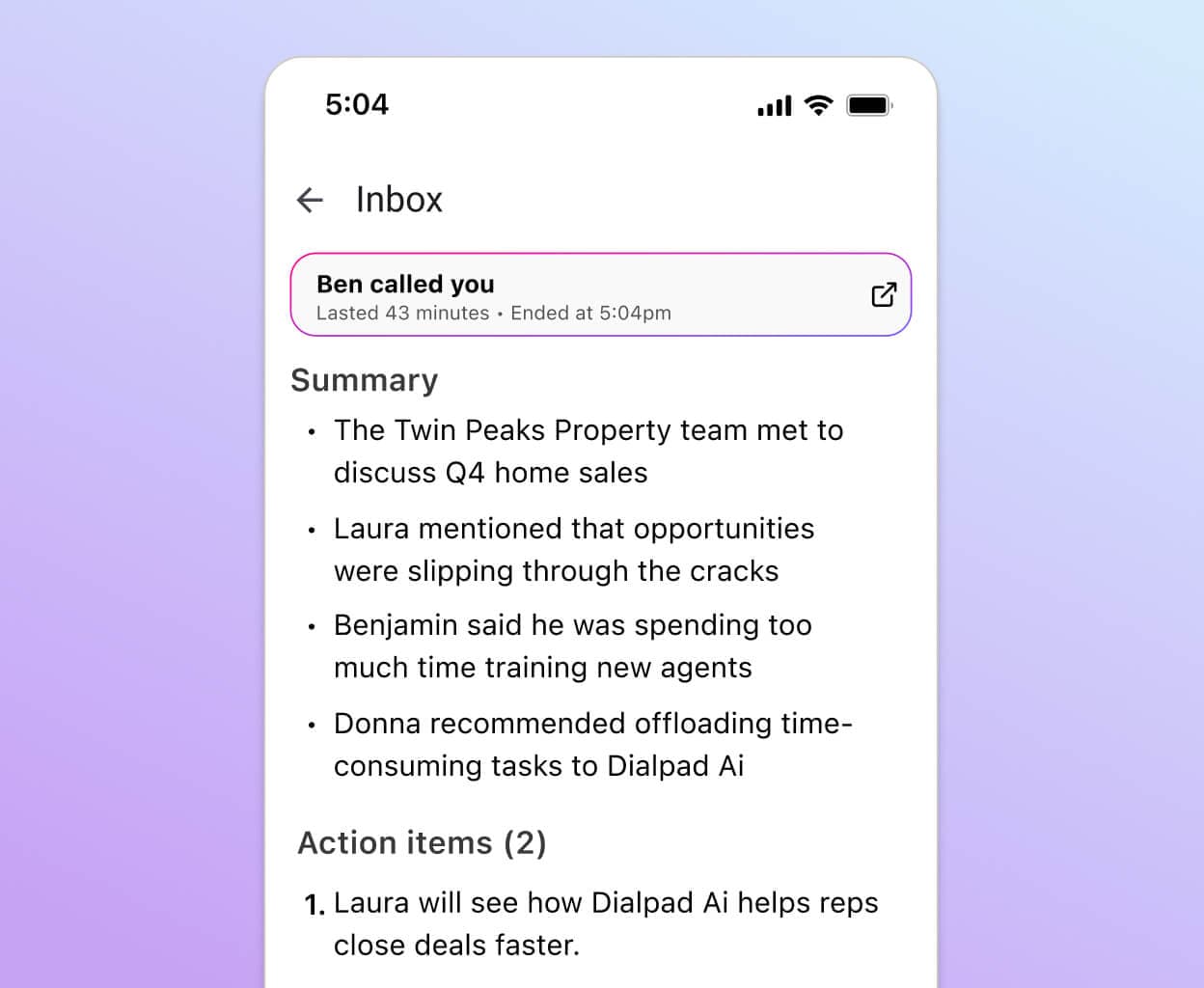
Fast deployment
Set up your virtual contact centre teams and assign phone numbers—all in on your online account, without purchasing hardware. Dialpad works across your existing devices and allows you to manage your own contact centre easily (and efficiently).

Speedier QA
Accelerate quality assurance (QA) reviews, reduce compliance risks, and improve agent adherence with Dialpad's Ai Scorecards. Instead of supervisors having to review call recordings manually, Dialpad Ai automatically suggests when QA Scorecard criteria have been met and highlights coaching opportunities.

Integrations with your existing tools
Empower your agents to provide a consistently high level of customer care, no matter what tools they’re using. From Zendesk to HubSpot to Salesforce, Dialpad integrates with most popular ticketing systems and CRMs to embed a dialler inside those platforms and streamline customer support agents' workflows across channels.
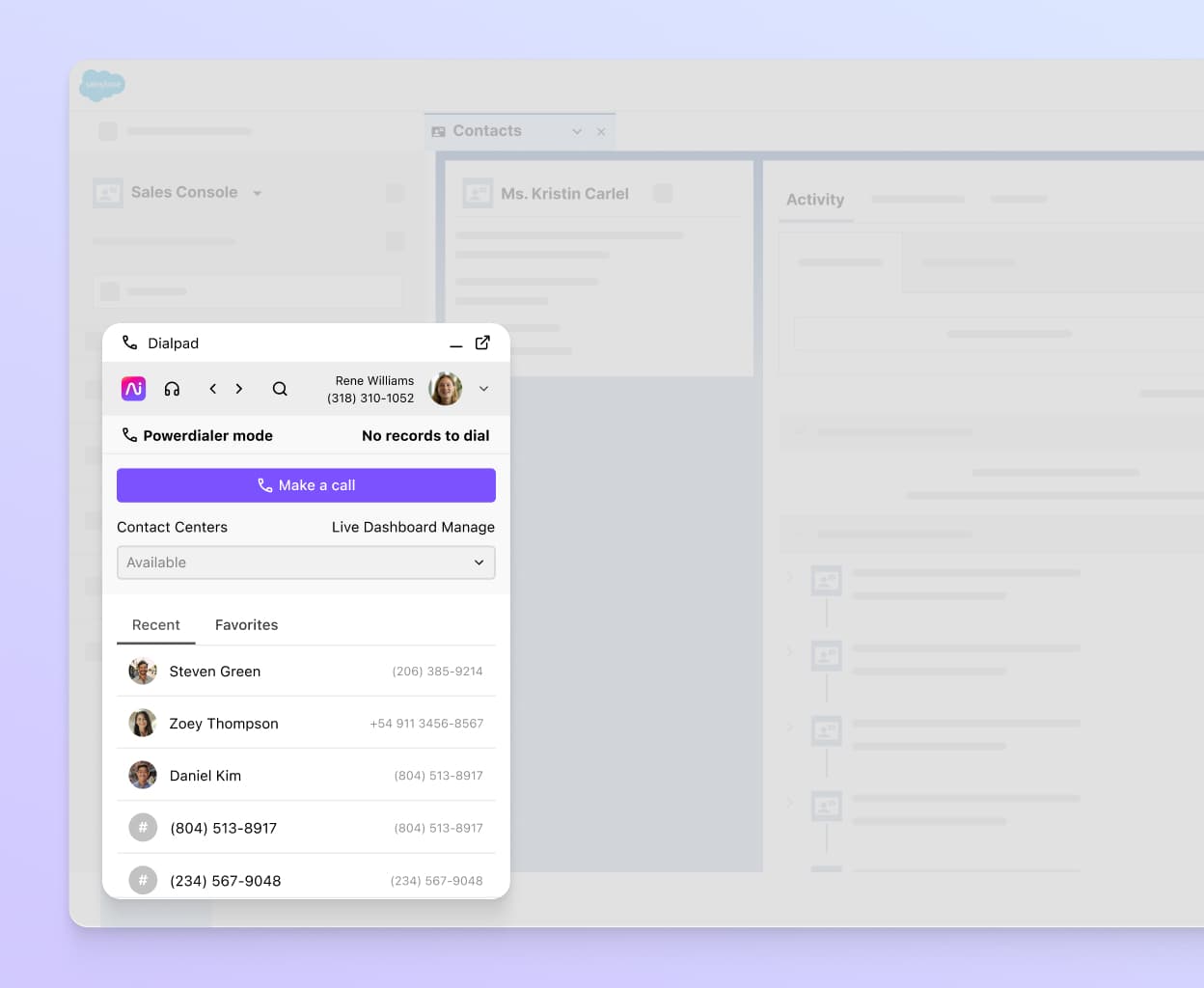
IVR capabilities
Automatically route incoming callers to the most appropriate person, department or self-service solution with IVR (Interactive Voice Response). Dialpad’s fully customisable IVR menu lets you quickly create interactive voice response menus.
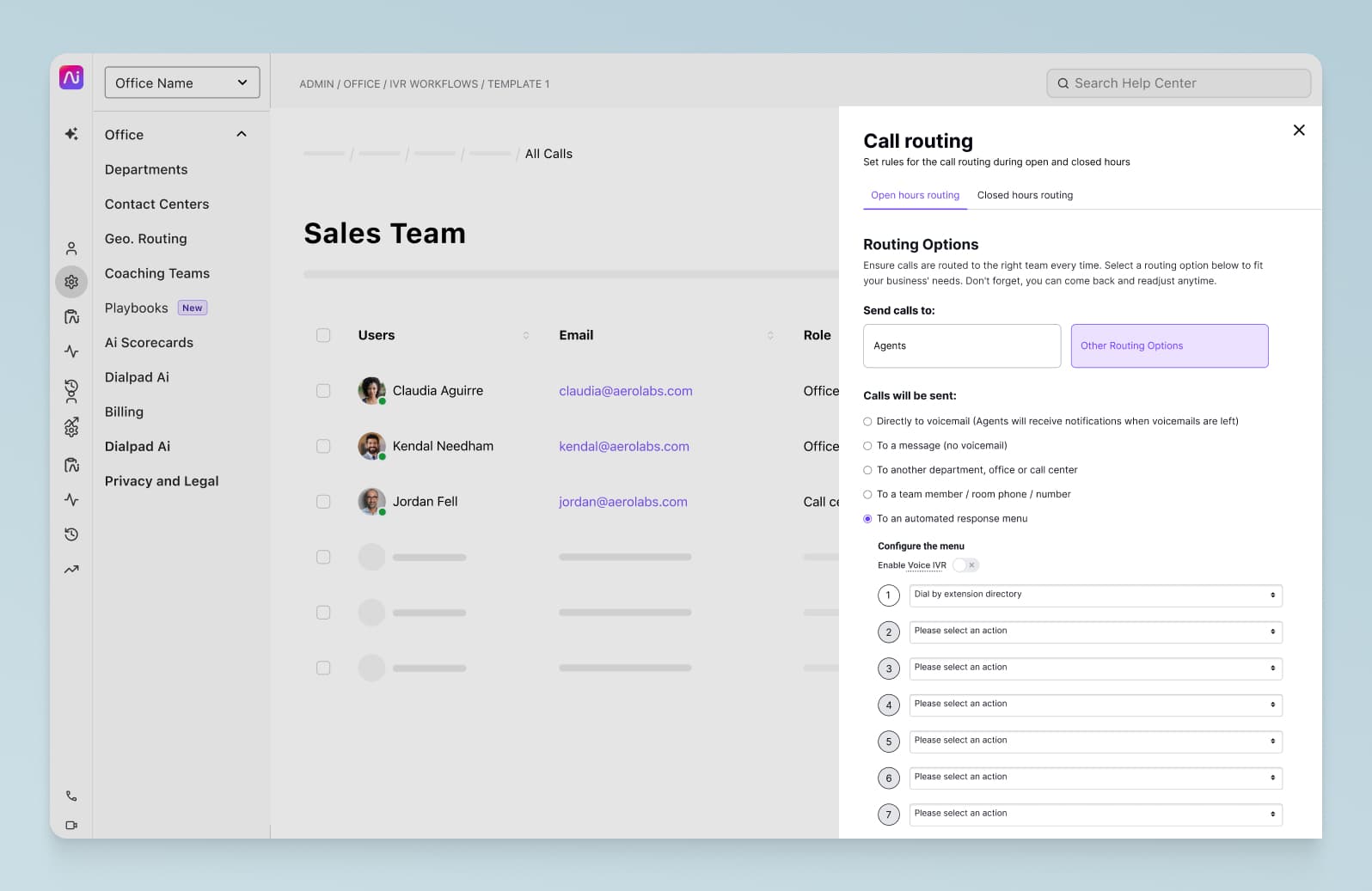
Call recording and monitoring
Not only can you monitor calls to improve customer satisfaction in real time, but you can also record calls for training and compliance purposes. In a single click, you can start and pause call recording, plus you can even create coaching playlists to improve the effectiveness, efficiency and compliance of your contact centre.
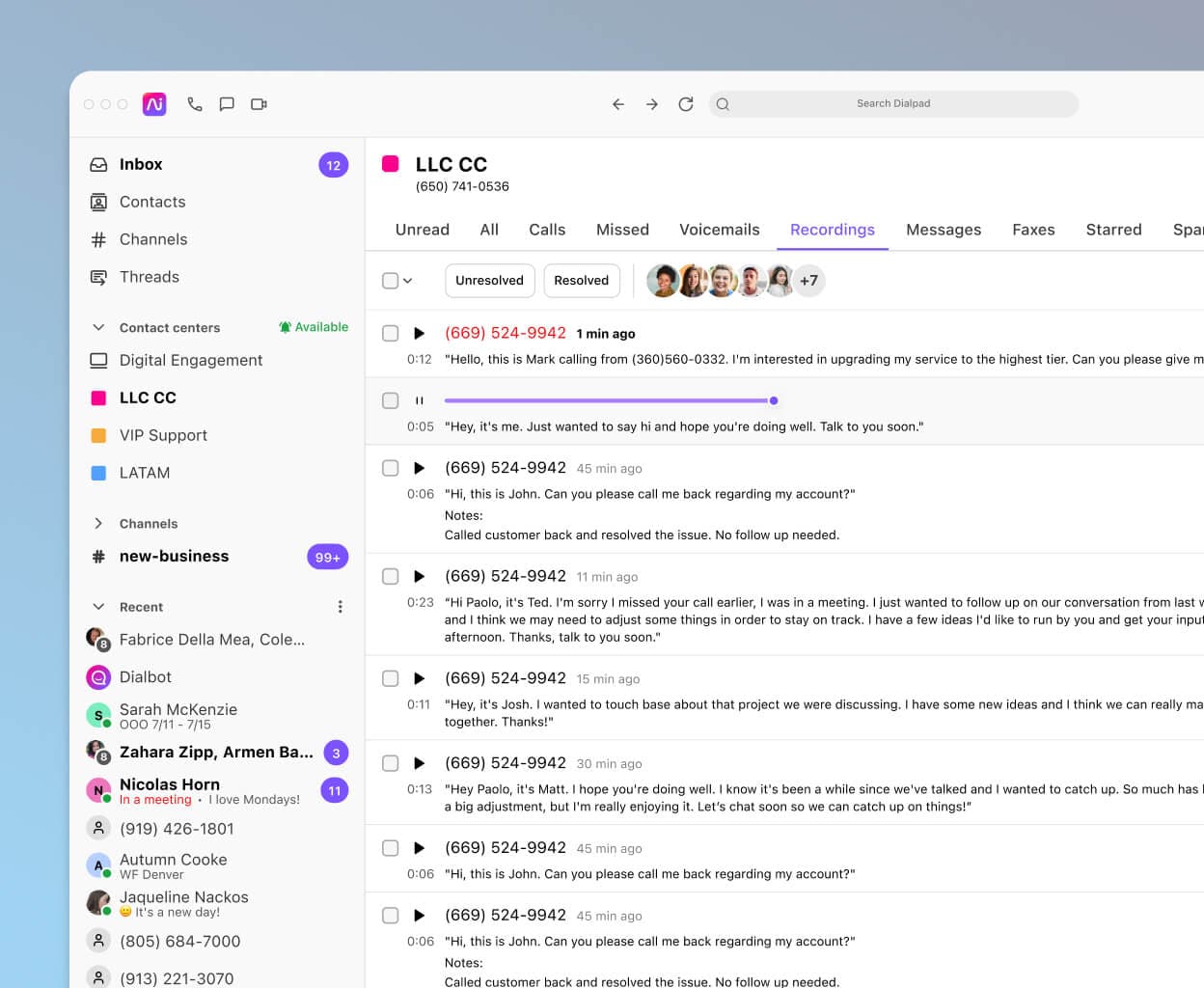
An AI-powered virtual contact centre solution
Omnichannel communications
Whether your customers are reaching out through Apple Business Chat, WhatsApp, Facebook Messenger, or live chat, your agents will be able to handle all those conversations in one convenient place.

The smartest chatbot around
Dialpad Ai doesn't just answer preset questions with preset answers. It's a conversational AI feature that, unlike traditional chatbots, can search all connected knowledge sources in real time to find the right answers—instantly.
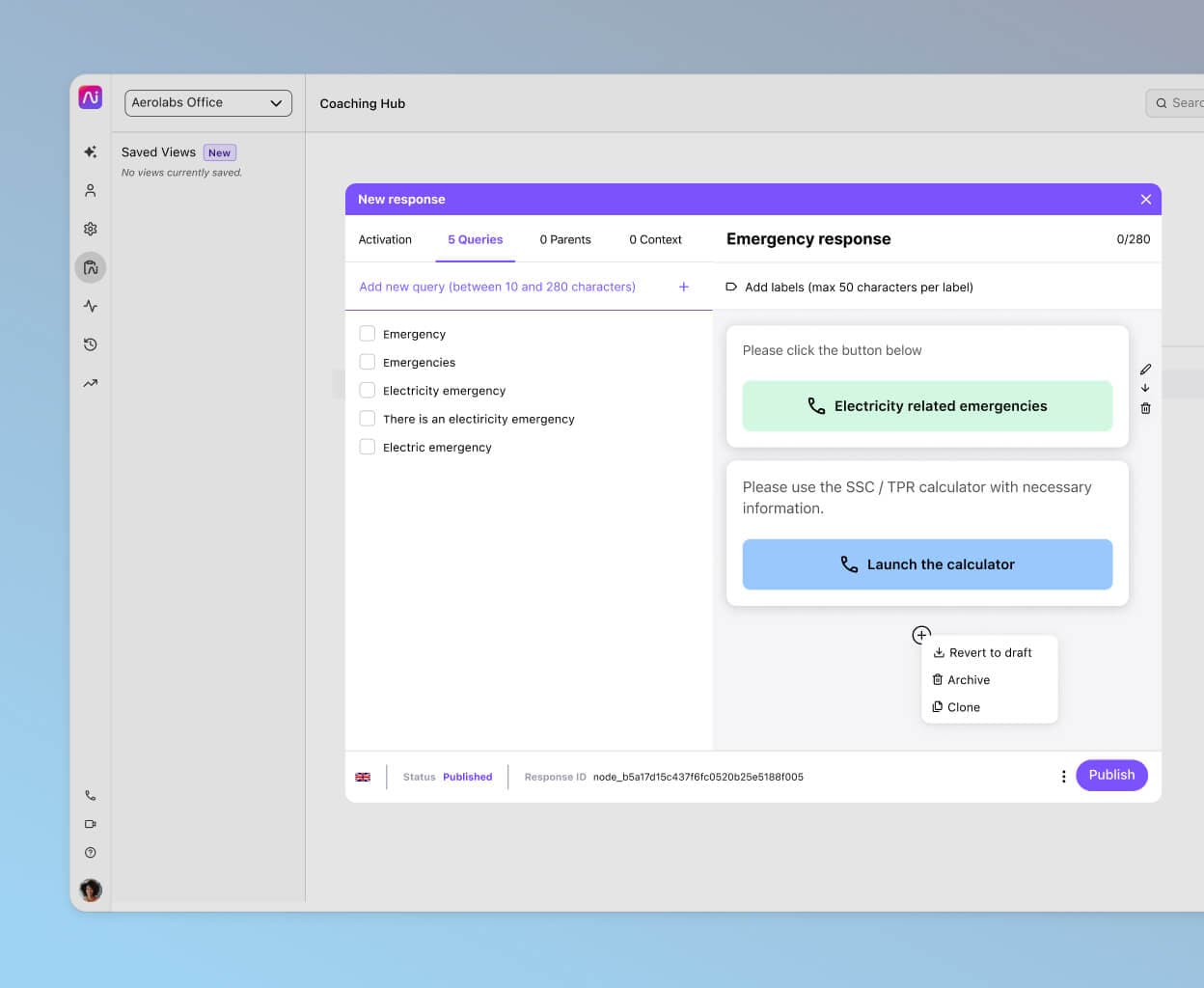
Live guidance for sales teams
With Dialpad's Ai Playbooks, coaches and supervisors can track rep adherence to sales methodologies like BANT, SPICED, and SPIN more easily. Dialpad Ai can automatically suggest questions and phrases that they need to say during a call (for example, asking about budget or purchase timelines), understand whether the behaviour was met, and check the task off the list (or notify managers if this isn't being done).
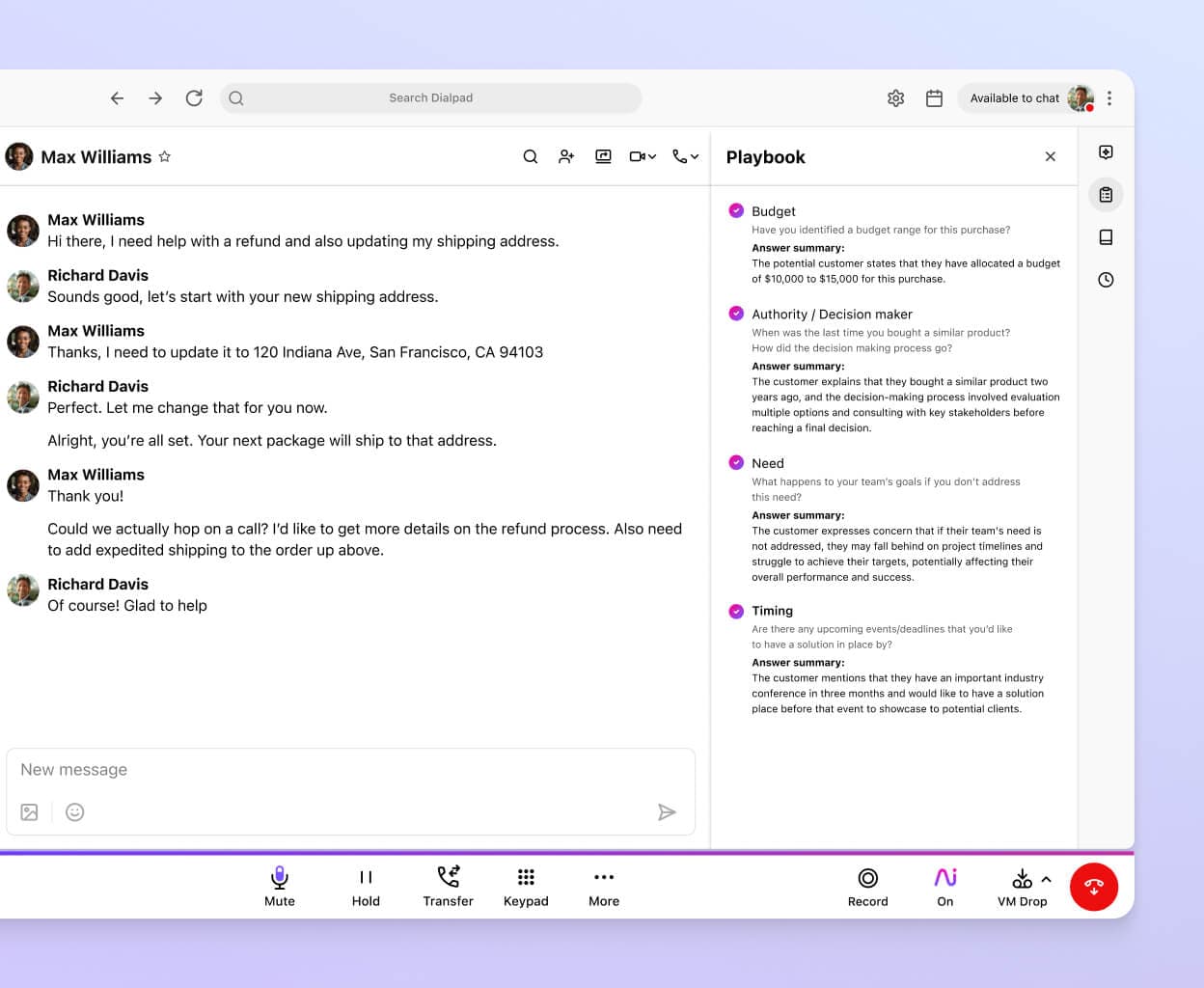
Essentials
You could save 15% with annual billingInbound voice
IVR
ACD
Recording
Monitor, whisper, barge
Basic Ai
Advanced
$115
user/month
$135 USD if billed monthly
All the value of the Essentials plan, plus:
Digital support
Live Assist
Digital Virtual Assistant
Premium
$150
user/month
$170 USD if billed monthly
All the value of the Advanced plan, plus:
Omni-channel support
Ai Scorecards
Ai CSAT
Dialpad Support vs. other contact center platforms


🌟 Native capabilities
- Owns all of its own technology and features—including Ai, real-time transcription, omnichannel, and self-service chatbot functionality.
- Typically needs partner integrations / third-party tools to provide full range of functionality, like Ai, transcription, and omnichannel support.
⏰ Time-to-Value (TTV)
- Setting up a new contact center takes as little as a few minutes thanks to Dialpad’s cloud-native platform and menu-driven self-configuration.
- Setting up new users can take days or weeks, requiring significant professional services involvement.
📈 Scalability
- Incredibly easy to scale up and down—you can add and remove call queues, and hundreds of users all on your own!
- Can scale up (more easily with cloud than on-prem platforms), but difficult to scale users back down if business is only seasonally busy (even for cloud solutions).
💰 Total Cost of Ownership (TCO)
- Dialpad offers transparent pricing, high-value bundles of capabilities, and support is always included in all plans.
- May entice customers with a low initial price point that doesn’t include many needed features.
Benefits of a virtual call centre for business
A virtual call centre offers a range of advantages for businesses looking to optimise their customer service operations while maintaining flexibility and efficiency. Here are some key benefits:
Cost savings: Without the need for physical office space, utilities, and on-site equipment, businesses can significantly reduce overhead costs.
Access to a global talent pool: Virtual call centres allow businesses to hire the best talent from anywhere in the world, not just within commuting distance of a physical office.
Scalability: Easily scale your operations up or down based on demand, without the need for additional physical space or resources.
Increased flexibility: Virtual call centres offer greater flexibility for both businesses and employees, enabling round-the-clock service with agents across different time zones.
Improved employee satisfaction: Remote work opportunities can lead to higher job satisfaction and lower turnover, as employees enjoy a better work-life balance.
Business continuity: With agents distributed across various locations, virtual call centres are more resilient to local disruptions, such as natural disasters or power outages.
Enhanced customer experience: By leveraging cloud-based tools and AI, virtual call centres can provide personalised and efficient customer service, improving overall satisfaction.
How to start a virtual call centre (or contact centre): Some hints and tips
1. Have the right tools in place for your team to work virtually
In order for your agents and supervisors to start working remotely, they need to be able to communicate with each other (and your customers) even if they're not working in the office. To do this, they need some type of customer engagement or contact centre solution that lets them make and receive phone calls, answer live chat and social media messages—essentially, handle any communication channel that your company supports.
A tip here is to choose a solution that consolidates all these different channels into one place (as opposed to using one video conferencing app, a separate social media tool, another phone system, and so on). This will make it easier for your agents and managers to keep track of all the different simultaneous conversations, and keeps all that interaction data in one convenient place.
2. Have a solid workflow and QA process
When you're running a virtual call centre, your team won't all be in the same room, or even the same building. If agents have questions, they can't just tap their supervisor on the shoulder to ask. This makes it more important to have your policies, product information, and any other knowledge sources that your agents will need all in one accessible place.
You could have an internal wiki or some kind of online database, but the most important thing is to make sure that anyone on your team can easily find the information they need, especially when they're live on a conversation with a customer. On a related note, your supervisors also need to be able to do quality assurance easily. You could use AI to help with analysing or auditing calls, which can speed things up for managers.
3. Understand your team goals (and communicate them)
To start a virtual call centre successfully, it helps to have everyone on the same page from the onset. Once you onboard new hires, make the company goals, team goals, and individual agent goals clear for them during training. They should know what they're being measured against, whether those are metrics like CSAT scores, average handle time, or whatever you think is most important for your contact centre to run smoothly.
4. Ensure reliable internet and technical infrastructure
A virtual call centre relies heavily on a stable internet connection and robust technical infrastructure. Ensure that all team members have access to high-speed internet and necessary hardware, such as headsets and computers, that meet the technical requirements of your contact centre software. Consider setting up VPNs for secure access to company resources and have a plan for technical support to assist with any issues that may arise.
5. Establish clear communication channels
Communication is key in a virtual environment. Set up clear communication channels for your team to stay connected, such as dedicated chat groups, regular video calls, and email protocols. Consider implementing daily or weekly check-ins to ensure everyone stays aligned and feels supported. Having a clear communication strategy helps maintain team cohesion and ensures that no one feels isolated.
6. Provide ongoing training and development
Continuous learning is crucial for the success of a virtual call centre. Offer regular training sessions to help your agents stay updated on new products, tools, or customer service techniques. Consider using e-learning platforms or virtual workshops to facilitate ongoing professional development. Additionally, providing resources for self-paced learning can empower agents to improve their skills at their own pace.
7. Implement security and compliance measures
With remote work, data security becomes even more critical. Ensure that all communication and customer data are handled securely by implementing strong security protocols, such as encryption and multi-factor authentication. Additionally, ensure your virtual call centre complies with relevant regulations, such as GDPR or HIPAA, depending on the nature of your business.
8. Monitor and optimize performance
Regularly monitor the performance of your virtual call centre by tracking key metrics such as average response time, call resolution rate, and customer satisfaction scores. Use this data to identify areas for improvement and optimize your processes. Consider implementing feedback loops where agents can share their experiences and suggestions for improving workflows.
Run your team of agents from anywhere with virtual call centre software
If your organisation is ready to open up your hiring to include remote agents, then having virtual call centre software is a must. Whether you're handling inbound calls, outbound calls, or a mix of both, you'll want to explore inbound call centre software and blended call centre software. However, an omnichannel solution that can seamlessly manage all types of communication is often the most effective choice.
If your operations extend beyond phone calls to include instant messaging and other communication channels, then virtual contact centre software might be a better fit. Having the right software is crucial for successful onboarding and training. When combined with self-service options, it can greatly enhance the customer experience.
✒️ Grab the Contact Centre RFP Checklist
Vetting different cloud contact centre solutions? This RFP checklist covers the essentials to be aware of and why they may be important for your contact centre.
Need a virtual contact centre platform?
Book a demo to check out Dialpad's AI-powered customer engagement platform, or take a self-guided interactive tour of the app on your own first!








